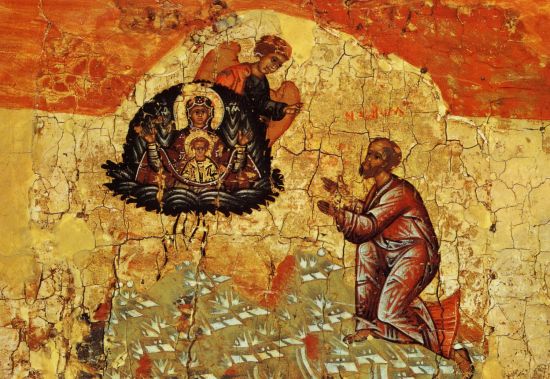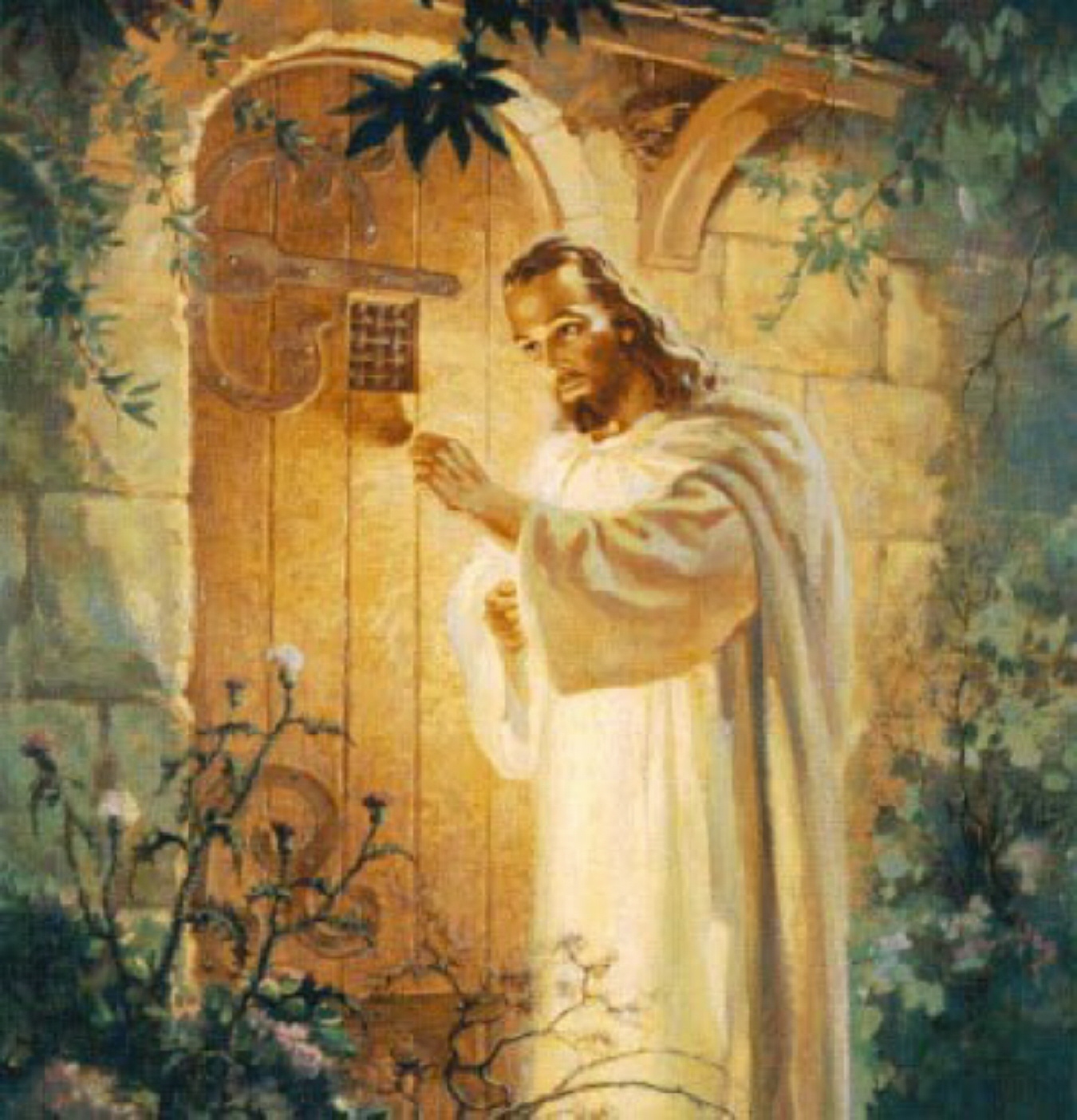Augustine of Hippo. The Confession
Augustine: Life

- 354: Born Aurelius Augustine in Thagaste, North Africa -modern day Algeria.
- Father was Patricius, a local government offical and a pagan.
- Mother was Monica, a Christian believer who had great influence over her son.
- 271-374: Studied law at Cathage.
- 375: Conversion to Manicheaism.
- 376-383: Taught rhetoric in Milan.
- 386: Converted to Christianity.
- 387: Baptized and joined a monastic community in Thagaste.
- 391: Ordained a priest in spite of his obections; founded a new community in Hippo.
- 397: Consecrated Bishop of Hippo against his wishes.
- 430: Died while Hippo was under siege by Vandals.
Introduction of Confessions (Augustine)
- Written shortly after Augustine was named bishop of Hippo (395-400).
- Written at the request of his friend Paulinus of Nola; 11 years after his baptism.
- It is Augustine the bishop reflecting in middle age on events in his youth.
- It is not telling the story of his youth; it is a reflection.
- The 13 Books are Augustine's divisions.
- Confessions (as most books in antiquity) was serialized.
- Each of 13 Books was an installmennt.
- Became an instant best seller.
John Milton
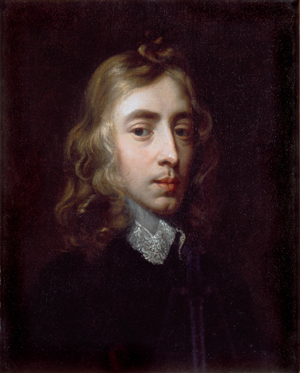
John Milton (9 December 1608 - 8 November 1674) was an English poet, polemicist, man of letters, and a civil servant for the Commonwealth of England under Oliver Cromwell under Oliver Cromwell. He wrote at a time of religious flux and politicial upheaval, and is beat known for his epic poem Paradise Lost (1667), written in blank verse.
Milton's poetry and prose reflect deep personal convictions, a passion for freedom and self- determination, and the urgent issues and politicial turbulence of his day. Writting in English, Latin,Greek, and Italian, he achieved international renown within his lifetime, and his celebrated Areopagitica (1644)-written in condemnation of pre-publication censorship-is among history's most influential and impassioned defences of free speech and freedom of the press.
Samson Agonishes.
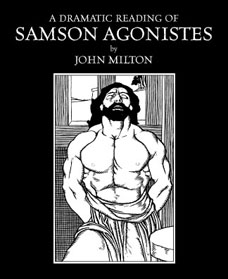
Samson Agonishes (Greek for "Samson the agonist") is a tragic closet drama by John Milton. It appeared with the publication of Milton's Paradise Regain'd in 1671, as the title page of that volume states: "Paradise Regained / A Poem / In Ⅳ Books / To Which Is Added / Samson Agonistes". It is generally thought that Samson Agonistes was begun around the same time as Paradise Regained but was completed after the larger work, possibly very close to the date of publishing,but there is no agreement on this.
Delilah.

Delilah (meaning"[She who]weakened) is a character in the Hebrew bible Book of Judges, where she is the "woman in the valley of Sorek" who Samson loved, and who was his downfall. Her figure, one of several dangerous temptresses in the Hebrew Bible, has become emblematic:"Samson loved Delilah, she betrayed him, and, what is worse, she did it for money," Madlyn Kahr begins her study of the Delilah motif in European painting.
The story of Samson in Judges 13-16 portrays a man who was given great great strength by God but who ultimately loses his strength when Delilah allows the Philistines to shave his hair during his slumber (Judges 16:19). Samson was born into an israelite family, the son of Manoah and his wife who is never named. Both are visited by the Angel of the Lord and told that their child will be a Nazirite from birth.
Goldilocks and The Three Bears.

"Goldilocks and the Three Bears" and the older "The Story of the Three Bears" are two variations of an old fairy tale. The original tale tells of an ugly, old woman who enters the forest home of three bachelor bears whilst they are away. She sits in their chairs, eats some of their porridge, and falls asleep in one of their beds. When the bears return and discover her, she starts up, jumps from the window, and is never seen aain. The other major version brings Goldilocks to the tale (replacing the old woman), and an even later version retained Goldilocks, but has the three bachelor bears transformed into Papa, Mama, and Baby Bear.
What was originally a fearsome aral tale became a cosy family story with only a hint of menace. The story has elicited various interpetations and has been adapted to film, opera, and other media. "The Story of the Three Bears" is one of the most popular fairy tales in the English language.
Satan.

Satan (meaning;"astray","distant", or sometimes "devil")is a figure appearing in the texts of the Abrahamic religions who brings evil and temptation, and is known as the deceiver who leads humanity astray. Some religious groups teach that he originated as an angel who fell out of favor with God, seducing humanity into the ways of sin, and who has power in the fallen world. In the Hebrew Bible and the New Testament. Satan is primarily an accuser and adversary, a decidedly malevolent entity, also called the devil, who possesses demonic qualities.
Lucifer.

Lucifer is the King James Version rendering of the Hebrew. This word, transliterated, occurs only once in the Hebrew Bible and according to the KJV based Strong's Concordance means "shining one,"light bearer. The word Lucifer is taken from the Latin Vulgate, which translats הֵילֵל as lucifer, meaning"the morning star, the planet Venus",or ,as an adjective,"light bringing". The Septuagint renders הֵילֵל in Greek as ἑωσφόρος(heōsphoros),a name, literally"bringer of dawn", for the morning star.
Prince of Darkness.
Prince of Darkness is a 1987 American supernatural horror film directed, written and scored by John Carpenter. The film is the second installment in what Carpenter calls his" Apocalypse Trilogy", which began with The Thing(1982)and concludes with In The Mouth of Madness(1995).
Dante Alighieri.

Durante degil Alighieri, simply called Dante, was a major Italian poet of the late Middle Ages. His Divine Comedy, originally called Comedia (modern Italian: Commedia)and later christened Divina by Boccaccio, is widely considered the greatest literary work composed in the Italian language and a masterpiece of world literature.
In the late Middle Ages, the overwhelming majority of poetry was written in Latin, and therefore accessible only to affluent and educated audiences. In De vulgari eloquentia (On Eloquence in the Vernacular),however, Dante defended use of the vernacular in literature. He himself would even write in the Tuscan dialect for works such as The New Life (1925) and the aforementioned Divine Comedy, this choice, although highly unorthodox, set a hugely important precedent that later Italian writers such as Petrarch and Boccaccio would follow.
Vocabulary.
1. fate: 命運,註定
2. destiny:命運,天命
3. destination:目的地
4. powerlessness: 無能為力
5. parallel: 平行線
 6. paragraph: 段落
6. paragraph: 段落
7.parasol: 陽傘

8. the golden parachute: 黃金降落傘

9. parasite: 寄生蟲

10. Beatrice: 比阿特麗斯(女子名)
11. seven deadly sins: 七宗罪
12. lovely: (adj)可愛的,令人愉悅的

13. friendly: (adj)友好的,親切地
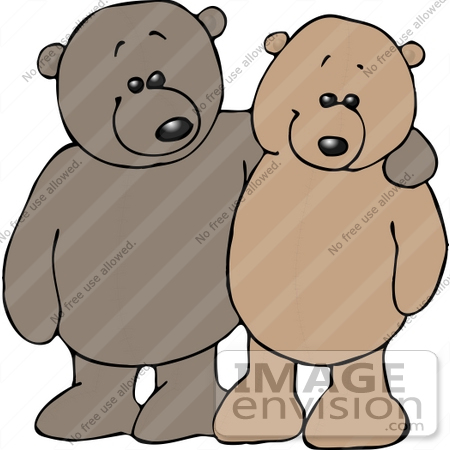
14. elderly: (adj)上了年紀的,稍老的

15. cowardly: (adj) 懦弱的,膽小的
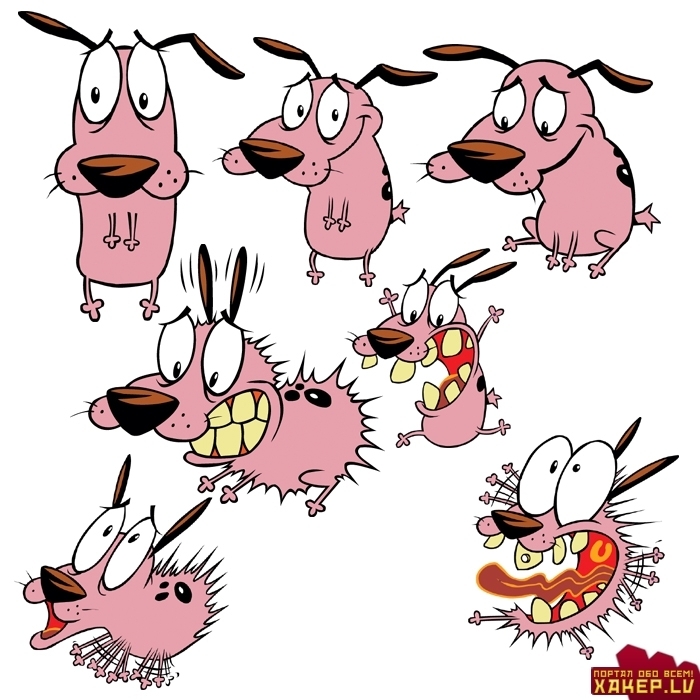
16. deadly: (adj)致命的,非常的

17. whirlwind: (氣象)旋風

18. flames: 火焰,火苗

19. reconciliation: 和解,調和

Divine Comedy.
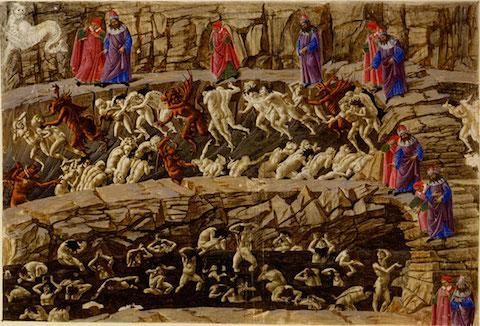
The Divine Comedy is an epic poem by Dante Alighieri, begun c. 1308 and completed 1320, a year before his dealth in 1321. It is widely considered the preeminent work of Italian literature and is seen as one of the greatest works of world literature. The poem's imaginative vision of the afterlife is representative of the medieval world view as it had developed in the Western Church by the 14th century. It helped establish the Tuscan language, in which it is written, as the standardized Italian language. It is divided into three parts: Inferno, Purgatorio, and Paradiso.
 Dante
Dante shown holding a copy of the Divine Comedy, next to the entrance to Hell the seven terraces of Mount Pargatory and the
city of Florence, with the spheres of Heaven above,in
Michelino's fresco.
Florence.

Florence is the capital of the Italian region of Tuscany and of the province of Florence. It is the most populous city in Tuscany, with approximately 382,000 inhabitants, expanding to over 1,520,000 in the metropolitan area.
Florence is famous for its history: a centre of medieval European trade and finance and one of the wealthiest cities of the time, it is considered the birthplace of the Renaissance, and has been called"the Athens of the Middle Ages". A turbulent political history includes periods of rule by the powerful Medici family, and numerous religious and republican revolutions. From 1865 to 1871 the city was the capital of the recently established Kingdom of Italy.
Paradiso.

Pradiso is the third and final part of Dante's Divine Comedy, following the Inferno and the Inferno and the Purgatorio. It is an allogory telling of Dante's journey through Heaven, guided by Beatrice, who symbolises theology. In the poem, Paradise is depicted as a series of concentric spheres surrounding the Earth, consisting of the Moon, Mercury, Venus, the Sun, Mars, Jupiter, Saturn, the Fixed Stars, the Primum Mobile and finally, the Empyrean. It was written in the early 14th century. Allegorically, the poem represents the soul's ascent to God.
Purgatorio.
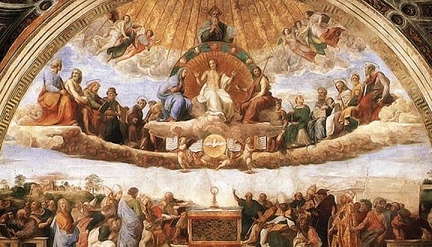
Prugatorio is the second part of Dante's Divine Comedy, following the Inferno, and preceding the Paradiso. The poem was written in the early 14th century. It is an allegory telling of the climb of Dante up the Mount of Purgatory, guided by the Roman poet Virgil, except for the last four cantos at which point Beatrice takes over as Dante's guide. In the poem, Purgatory is depicted as a mountain in the Southern Hemisphere, consisting of a bottom section (Ante-Purgatory), seven levels of suffering and spiritual growth (associated with the seven deadly sins), and finally the Earthly Paradise at the top. Allegorically, the poem represents the Christian life, and in describing the climb Dante discusses the nature of sin, examples of vice and virtue, as well as moral issues in politics and in the Church. The poem outlines a theory that all sin arises from love - either perverted love directed towards others' harm, or deficient love, or the disordered or excessive love of good things.
Inferno(Dante).
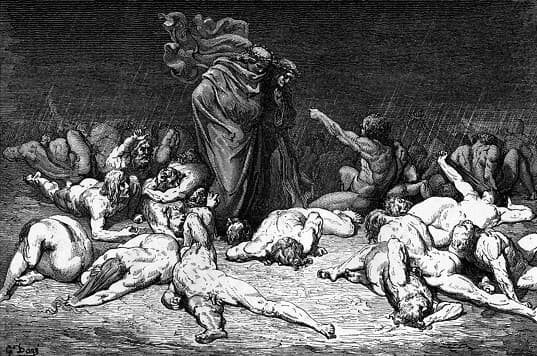
Inferno is the first part of Dante Alighieri's 14th century epic poem Divine comedy. It is followed by Purgatorio and Paradiso. It is an allegory telling of the journey of Dante through Hell, guided by the Roman poet Virgil. In the poem, Hell is depicted as nine circles of suffering located within the Earth. Allegorically, the Divine Comedy represents the journey of the soul toward God, with the Inferno describing the recognition and rejection of sin.
Inferno(Brown novel).
Inferno is a 2013 mystery thriller novel by American author Dan Brown and the fourth book in his Robert Langdon series, following Angels & Demons, The Da Vinci Code and The Lost Symbol. The book was released on May 14, 2013 by Doubleday. It was number one of the New York Times Best Seller list for hardcover fiction on the list of E-book for the first seventeen weeks of its release.
Dan Brown.

Daniel"Dan Brown (born June 22, 1964) is an American auhor of thriller fiction who is best known for the 2003 bestselling novel The Da Vinci Code. Brown's novels are treasure hunts set in a 24 hour period and feature the recurring themes of cryptography, keys, symbols, codes, and conspiracy theories. His books have have been translated into 52 languages, and as of 2012, sold over 200 milion copies. Three of them, Angels & Demons(2000), The Da Vinci Code (2003), and Inferno (2013), have been/are being adapted into flms.
Burning Bush.
The burning bush is an object described by the Book of Exodus as being located on Mount Horeb. According to the narrative, the bush was on fire, but was not consumed bu the flames, hence the name. In the biblical narrative, the burning bush is the location at which Moses was appointed by Yahweh (God) to lead the Israelites out of Egypt and into Canaan.
The Hebrew word used in the narrative, that is translated into English as bush, which refers in particular to brambles, seneh is a biblical dis legomenon, only appearing in two places, both of which describe the burning bush. It is possible that the refence to a burning bush is based on a mistaken interpretation of Sinai, a mountain described by the Bible as being on fire. Another possibility is that the use of seneh (סנה) may be deliberate pun on Sinai (סיני), a feature common in Yahwistic texts.
Moses.

Moses is a prophet in Abrahamic religions. According to the Hebrew Bible, he was a former Egyptian prince who later in life became a religious leader and lawgiver, to whom the authorship of the Torah is tranditionally attributed. The historical consensus is that Moses is not an historical figure. Also called Moshe Rabbenu in Hebrew. He is the most important prophet in Judaism. He is also an important prophet in Christianity, Islam, Baha'ism as well as a number of other faiths.
Hermitage Museum.

The State Hermitage is a museum of art and culture in Saint Petersburg, Russia. One of the largest and oldest museums in the world, it was founded in 1764 by Catherine, the Great and has been open to the public since 1852. Its collctions, of which only a small part is on permanent display, comprise over three million items including the largest collection of paintings in the world. The collections occupy a large complex of six historic buildings along Palace Embankment, including the Winter Palace, a former residence of Russian emperors. Apart from them, the Menshikov Palace, Museum of Porcelain, Storage Facility at Staraya Derevnya and the eastern wing of the General Staff Building are also part of the museum. The museum has several exhibition centers abroad. The Hermitage is a federal state property. Since 1990, the director of the museum has been Mikhail Piotrovsky.
Lourve.
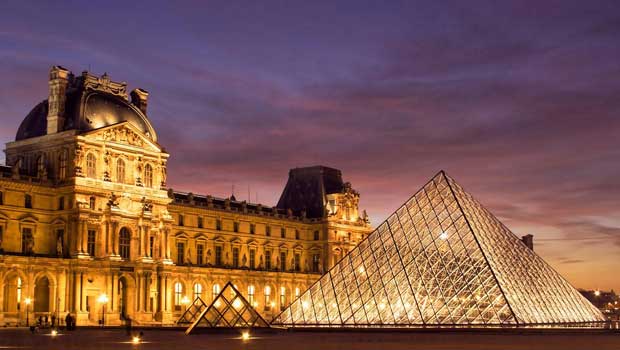
The Lourve or the Louvre Museum is one of the world's largest museums and a historic monument in Paris France. A central landmark of the city, it is located on the Right Bank of the Seine in the 1st arrondissement(ward). Nearly 350,000 objects from prehistory to the 21st century are exhibited over an area of 60,600 square metres (652,300 square feet). The Lourve is the world's most visited museum, receiving more than 9.26 million visitors in 2014.
British Museum.
The British Museum is a museum dedicated to human, art, and culture, located in the Bloomsbury area of London. Its permanent collection, numbering some 8 million works is among the largest and most comprehensive in existence and originates from all continents, illustrating and documenting the story of human culture from its beginnings to the present.
Canaan.

Canaan was during the late 2nd millennium BC, a region in the Ancient Near East. In the Bible it corresponds to the Levant, in particular the areas of the Southern Levant that are the main setting of the narrative of the Hebrew Bible, i.e. the area of Israel. Phoenicia, Philistia, and other nations.
Book of Exodus.

The book tells how the Israelites leave slavery in Egypt through the strength of Yahweh, the God who has chosen Israel as his people. Led by their prophet Moses they journey through the wilderness to Mount Sinai, where Yahweh promises them the land of Canaan (the"Promised Land" )in return for their faithfulness. Israel enters into a covenant with Yahweh who gives them their laws and instructions for the Tabernacle, the means by which he will dwell with them and lead them to the land, and give them peace.
Plagues of Egypt.
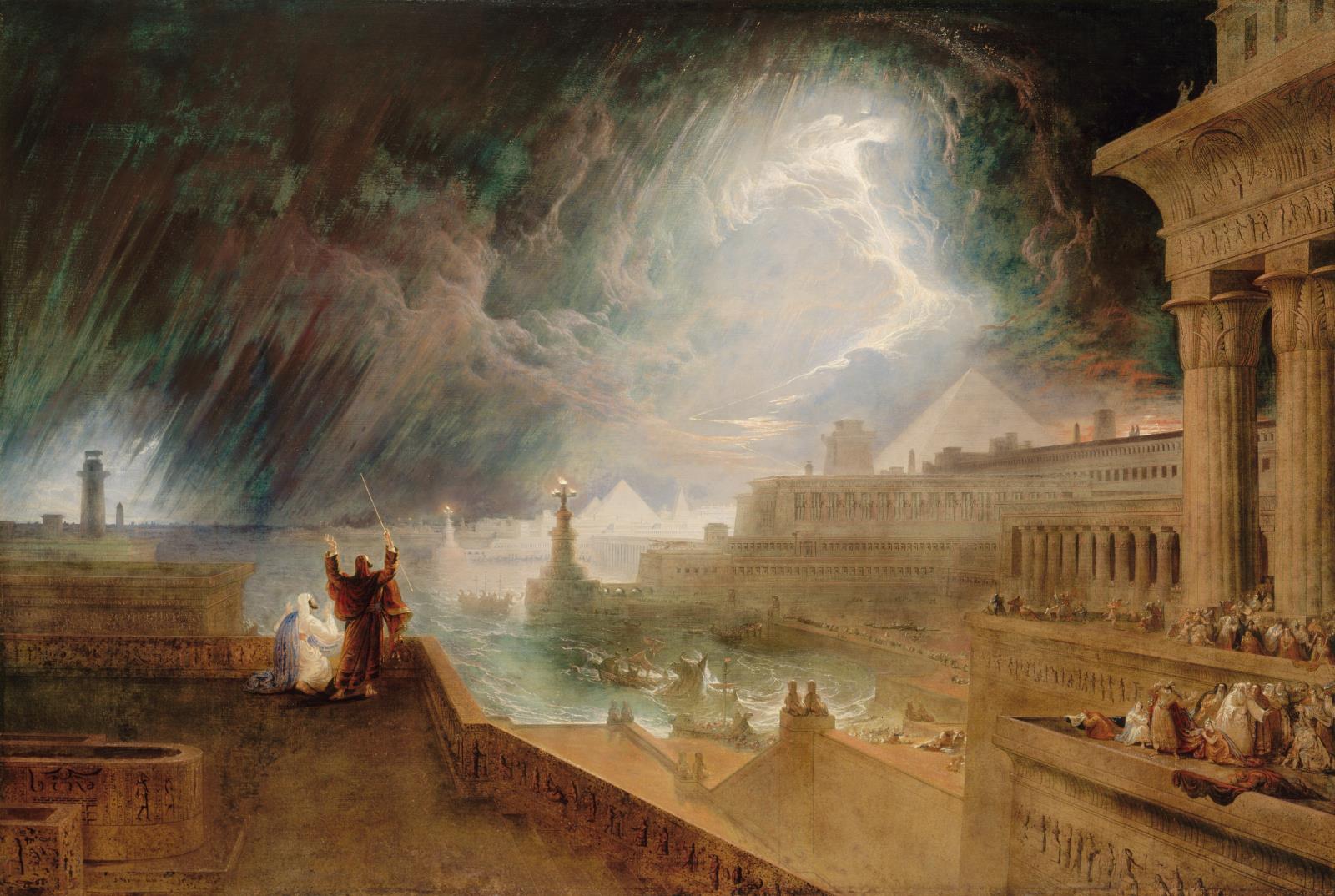
The Plagues of Egypt also called the ten biblical plagues, were ten calamities that, according to the biblical Book of Exodus, the God of Israel inflicted upon Egypt to persuade the Pharaoh to release the ill-treated Israelites from slavery. Pharaoh capitulated after the tenth plague, triggering the Exodus of the Hebrew people. The plagues served to contrast the power of the God of Israel with the Egyptian gods, invalidating them. Some commentators have associated several of the plagues with judgment on specific gods associated with the Nile, fertility and natural phenomena. According to Exodus 12;12, all the gods of Egypt and strike down every first born of both people and animals, and I will bring judgment on all the gods of Egypt. I am the LORD.
Passover.
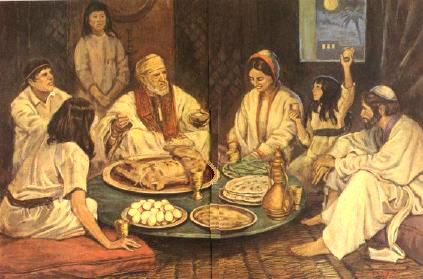
Passover or Pesach, is an imporant, biblically derived Jewish Festival. The Jewish people celebrate Passover as a commemoration of their liberation by God from slavery in Egypt and their freedom as a nation under the leadership of Moses. It commemorates the story of the Exodus as described in the Hebrew Bible especially in the Book of Exodus, in which the Israelites were freed from slavery in Egypt. According to standard biblical chronolagy, this event would have taken place at about 1300 BCE (AM 2450).
Flag of Israel.

The flag of Israel was adopted on October 28,1948, five months after the establishment of the State of Israel. It depicts a blue hexagam on a white background, between two horizontal blue stripes.
The blue colour is described as "dark sky-blue", and varies from flag to flag , ranging from a hue of pure blue, sometimes shaded almost as dark as navy blue, to hues about 75% toward pure cyan and shades as light as very light blue. The flag was designed for the Zionist Movement in 1891. The basic design recalls the Ashkenazi Tallit, the Jewish prayer shawl, which is white with black or blue stripes. The symbol in the center represents the Star of David ("Magen David"), a Jewish symbol dating from late medieval Prague, which was adopted by the First Zionist Congress in 1897.
Jewish Diaspora.

The Jewish diaspora or Exile refers to the dispersion of Israelites, Judahites, and later Jews out of what is considered their ancestral homeland (the Land of Israel) and the communities built by them across the world.
In terms of the Hebrew Bible, the term "Exile" denotes the fate of the Israelites who were taken into exile from the Kingdom of Israel during the 8th century BCE, and the Judahites from Kingdom of Judah who were taken into exile during the 6th century BCE. While in exile, the Judahites became known as "Jews"- "Mordecal the Jew" from the Book of Esther being the first biblical mention of the term.
Ten Commandments.

The Ten Commandments, also known as the Decalogue, are a set of commandments which the Bible describes as having been given to the Israelites by God at biblical Mount Sinai. The Ten Commandments are listed twice in the Hebrew Bible, first at Exodus 20;1-17, and the at Deuteronomy 5;4-21. Both versions state that God inscribed them on two stone tablets, which he gave to Moses. According to New Testament writers, the Ten Commandments are clearly attribured to Moses ( Mark7;10, see also John 7;19).
Manna.
Manna, sometimes or archaically spelled mana, is an edible substance that, according to the Bible and the Quran. God provided for the Israelites dring their travels in the desert.
Paradise Regained.

Paradise Regained is a poem by English poet John Milton, first published in 1671 bu John Macock. The volume in which it appeared also contained the poet's closet drama Samson Agonistes. Paradise Regained is connected by name to his earlier and more famous epic poem Paradise Lost, with which it shares similar theological themes; indeed, its title, is use of blank verse, and its progression through Christian history recall the earlier work. However, this effort deals primarily with the temptation of Christ as recounted in the Gospel of Luke.
Allegory.

As a literary device, an allegory in its most general sense is an extended metaphor. Allegory has been used widely throughout history in all forms of art, largely because it can readily illustrate complex ideas and concepts in ways that are comprehensible or striking to its viewers, readers, or listeners.
Writers or speakers typically use allegories as literary devices or as rhetorical devices that convey hidden meanings through symbolic figures, actions, imagery, and/ or events, which together create the moral, spiritual, or political meaning the author wishes to convey.
Fable.

Fable is a literary genre: a succinct fictional story, in prose or verse, that features animals, mythical creatures, plants, inanimate objects, or forces of nature that are anthropomorphized (given human qualities, such as verbal communication) and that illustrates or leads to an interpretation of a moral lesson (a "moral"), which may at the end be added explicitly as pithy maxim.
A table differs from a parable in that the latter excludes animals, plants, inanimate objects, and forces of nature as actors that assume speech or other powers of humankind.
Parable of the Prodigal Son.

The Parable of the Prodigal Son (also known as the Lost Son, Running Father, Loving Father,or Lovesick Father) is one of the parables of Jesus. It appears in only one of the Canonical gospels of the New Testament, the Gospel of Luke (Luke 15;11-32) . Jesus shares it with his disciples, the Pharisees and others. According to the story, a father has two sons. The younger son asks for his inheritance before the father dies, and the father agrees. The younger son, after wasting his fortune (the word"prodigal" means "wastefully extravagant"), goes hungry during a famine, and becomes so destitute he longs to eat the same food given to hogs, unclean animals in Jewish culture.
Jesus knocking at the door.



























